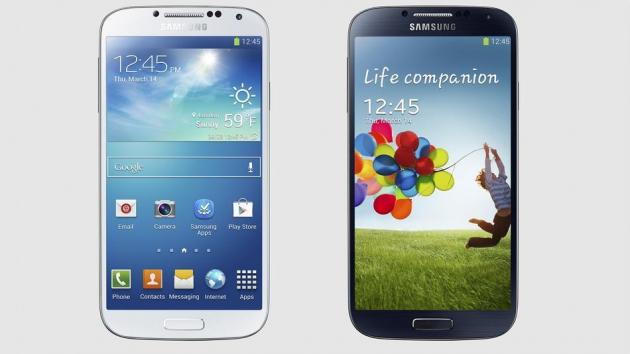 Samsung Unveils the Galaxy S 4
Samsung Unveils the Galaxy S 4

Samsung has introduced its latest flagship smartphone - the Galaxy S 4. It follows the spectacularly successful Galaxy S III, which sold over 100 million devices in 2012.
The S 4 looks like it's got some design DNA from the S III, and it still offers a more streamlined, refined design. The screen is 5 inches but the body of the device doesn't feel any larger than the Galaxy S III. Samsung made the device slimmer and stronger too, and you won't get the plasticky feel you got in the Galaxy S III.
What's powering it?
The 5-inch Super AMOLED display is 1920x1080, giving the Galaxy S 4 an eye-popping 441ppi resolution. It's covered with Gorilla Glass 3. Means it's real tough. Depending on market, it will have a 1.9Ghz quad-core processor or a 1.6 octa-core processor. It will run on Android 4.2.2 Jelly Bean and has 2GB of RAM and comes in 16, 32 or 64 GB configurations.As for wireless connections it's got Bluetooth 4.0 LE, NFC, Wi-Fi and GPS.
Powering all of this technology is a 2600 mAh battery.
Cameras
The cameras are pretty good on the Galaxy S 4. In addition to the 13 megapixel rear camera, the phone has a 2 megapixel front facing camera.It can be used together in a mode Samsung calls Dual Camera - which would allow both cameras to be used simultaneously to record video or take photos.
The Galaxy S 4 has a number of different shooting modes for different kinds of shots.
The camera also includes a few special features, including a mode called Drama Shot that lets users create cinemagraph-like images that are saved as animated GIFs.
Gestures and More
What's cool about the S 4 this time round, is that Samsung has added some gesture and haptic features from its Galaxy Note line into the S 4. The new feature is called Air View which lets users hover their fingers over content in certain apps, and see a preview of the content before changing screens.Air Gestures are Kinect-like gestures allowing users to navigate the phone and make voice calls without touching the screen.
Samsung also added a the new Smart Pause and Smart Scroll features that help users control content based on action. Smart Pause will pause videos when you turn away and resume when you look back. It doesn't use eye tracking, but instead facial recognition.
Smart Scroll on the other hand lets users scroll through the browser and email without touching the screen, using face movements and wrist gestures to determine when to scroll. It's pretty damn impressive!






